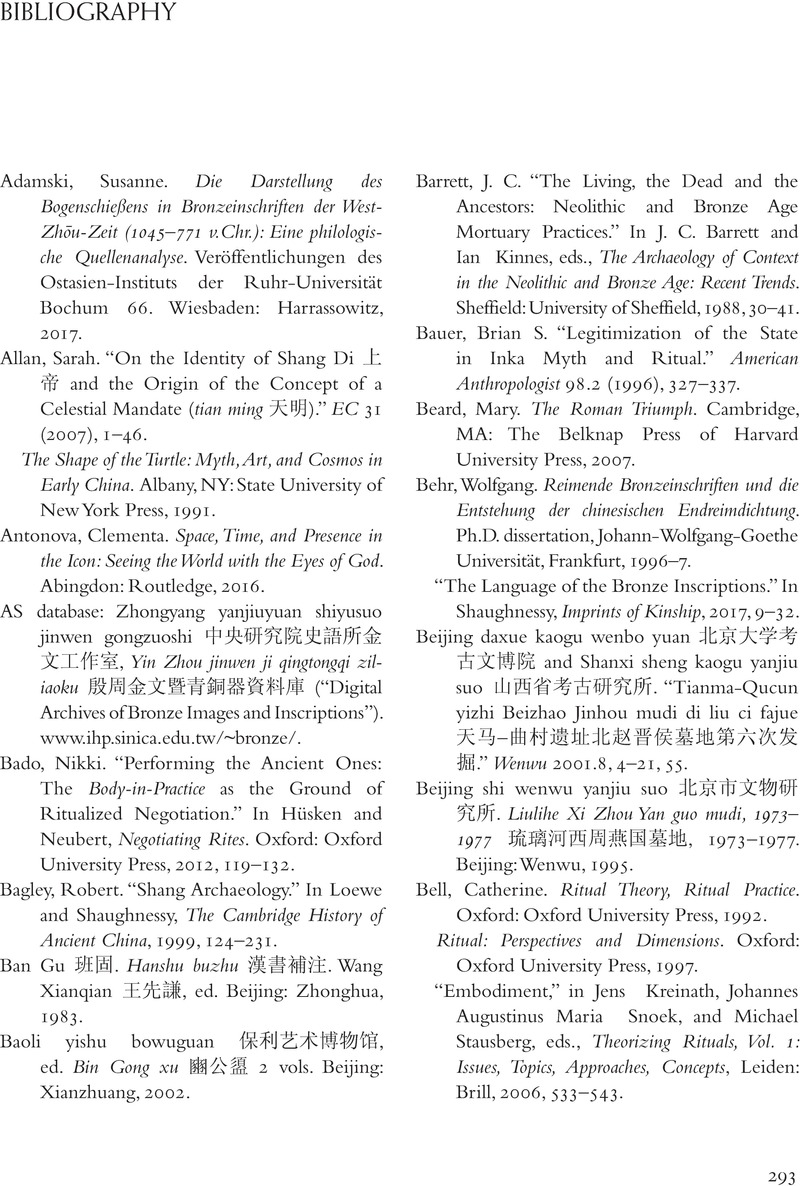Book contents
- Kingship, Ritual, and Royal Ideology in Western Zhou China
- Kingship, Ritual, and Royal Ideology in Western Zhou China
- Copyright page
- Contents
- Figures
- Abbreviations
- Acknowledgments
- Introduction
- 1 The Politics of Shang Ritual under the Zhou
- 2 The Ritual Figuration of the Zhou Kings
- 3 Ritual Recognition, Reward, and Patronage under the Zhou Kings
- 4 Ritual Assemblies and the Geopolitics of Zhou Expansion
- 5 Reading the “Ritual Reform”
- 6 The Ethic of Presence: Royal Ideology through Bronze Inscriptions
- Conclusion Zhou Ritual and Early Chinese History
- Appendix (Tables)
- Bibliography
- Subject Index
- Inscription Index
- References
Bibliography
Published online by Cambridge University Press: 10 November 2022
- Kingship, Ritual, and Royal Ideology in Western Zhou China
- Kingship, Ritual, and Royal Ideology in Western Zhou China
- Copyright page
- Contents
- Figures
- Abbreviations
- Acknowledgments
- Introduction
- 1 The Politics of Shang Ritual under the Zhou
- 2 The Ritual Figuration of the Zhou Kings
- 3 Ritual Recognition, Reward, and Patronage under the Zhou Kings
- 4 Ritual Assemblies and the Geopolitics of Zhou Expansion
- 5 Reading the “Ritual Reform”
- 6 The Ethic of Presence: Royal Ideology through Bronze Inscriptions
- Conclusion Zhou Ritual and Early Chinese History
- Appendix (Tables)
- Bibliography
- Subject Index
- Inscription Index
- References
Summary

- Type
- Chapter
- Information
- Kingship, Ritual, and Royal Ideology in Western Zhou China , pp. 293 - 309Publisher: Cambridge University PressPrint publication year: 2022

